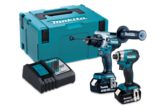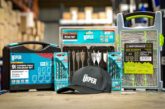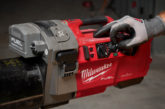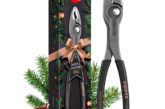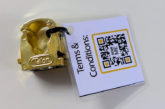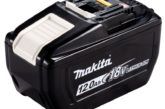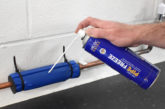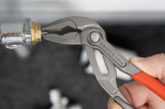
Nick Poulson, UK Country Manager at Carhartt, explains that the right workwear doesn’t just keep you comfortable, it can help protect your health for the long haul.
Most tradespeople look after their tools, but it’s easy to forget that the most important bit of kit on site is you. Spotting hazards like power tools or ladders is straightforward, but two of the biggest risks in the trade, UV exposure and joint strain, often go unnoticed until the damage is done. These are not the kind of things that cause instant injury. Instead, they creep up gradually and over months and years, the effects add up – and they can be serious. The good news is that preventing long-term damage doesn’t require big changes, just smarter kit.
It’s no surprise that many heating engineers and plumbers find themselves working outside, whether it’s fitting outdoor heat pumps, connecting pipework or repairing drainage. But unprotected skin is easily damaged. The Health and Safety Executive (HSE) lists construction workers as one of the UK’s highest-risk groups for skin cancer caused by UV exposure. You might assume that’s only relevant on scorching days, but UV rays in the UK are strong enough to cause damage from March to October even when it’s overcast and grey.
We all know and recognise the short-term effects of too much sun – sunburn. But you don’t need sunburn for skin damage; repeated UV exposure breaks down collagen and can cause DNA damage, aging skin and increasing your risk of developing skin cancers.
When the weather heats up, choosing the right clothing so you can work safely and comfortably becomes really important. UV rays can pass through many types of clothing and the amount of sun protection provided depends on factors like fabric material, weave tightness, colour and whether the fabric is dry or wet. Cotton is a popular choice in summer as it’s lightweight and dries quickly but it doesn’t keep UV rays out – the average cotton T-shirt has a UPF (Ultraviolet Protection Factor) of 5 which means that one fifth (roughly 20%) of available UV radiation passes through it.
Tightly woven fabrics, like wool, canvas or denim, provide better protection because there are fewer gaps for UV rays to pass through. But these can be heavy and hot in summer. Colour also makes a difference – dark colours absorb more UV rays than light, preventing it from reaching your skin. In doing so, they convert the energy from the rays into heat, which is why we often get hotter wearing darker clothing.
Built-in protection
Clothing designed with built-in sun protection and labelled with a UPF rating is the perfect answer. This kind of clothing can provide more reliable coverage than sunscreen, especially as most people don’t apply sunscreen as thoroughly or as frequently as recommended. UPF works in a similar way to SPF, but for fabric: it tells you how effectively the material blocks harmful UV rays. The higher the number, the better the protection.
Carhartt’s new Sun Defender™ range has been built for people who spend their working days outdoors. Rated at UPF 40+, these garments offer UV protection without the weight or bulk of heavy materials. Made from lightweight, breathable fabrics that wick sweat and dry quickly, they help regulate body temperature even on hot days. And with built-in odour control, they’re designed to perform all day long.
When it comes to eye protection, Carhartt’s wraparound polycarbonate safety glasses are lightweight and shield your eyes from almost the entire spectrum of UV light, direct rays and reflections, ideal when working near water, glass or shiny pipework.
Knee protection
There’s another big issue for tradespeople: your knees. According to the HSE, musculoskeletal disorders are consistently among the top causes of work-related ill health in the trades, with knee injuries leading the way. Plumbers and heating engineers kneel countless times a day. Over time, that repetitive pressure can lead to conditions like bursitis (which causes pain, tenderness and dull aches around the knee joint), cartilage damage or even osteoarthritis.
The problem is that knee damage builds slowly. You may not feel it from one job, but over months and years, that nagging pain can turn into permanent damage. Far too many people in the trade just ‘get on with it’ until they can’t, but preventing knee strain can be achieved with a pair of proper kneepads.
Not all kneepads are created equal. You don’t want bulky ones that shift about or dig into your leg – they should be lightweight and fit neatly into kneepad pockets. Kneepads for the trade should be EN 14404-4:2024 certified (which means they have been specifically developed to protect tradespeople and keep them comfortable while working on knees) and it’s important to look for Level 1 performance which can be used on uneven floor and protects against punctures from things like pebbles and small nails.
The Carhartt Interoperable Kneepads are designed to fit neatly into our range of Steel Pants and Dungarees. Made from lightweight polyethylene foam, they cushion pressure points and protect knees against hard surfaces and sharp debris. The foam is shaped to wrap around the knee naturally, which means better contact, less sliding and no pinching. They’re certified to EN 14404-4:2024 so you know they’ve been tested to handle the real pressures of the job.
The best tools don’t just sit in your bag, they look after your body while you work. Long-term health in the trades needs gear that protects you while you get on with the job. In a profession where your body is your best asset, that’s an investment worth making.


